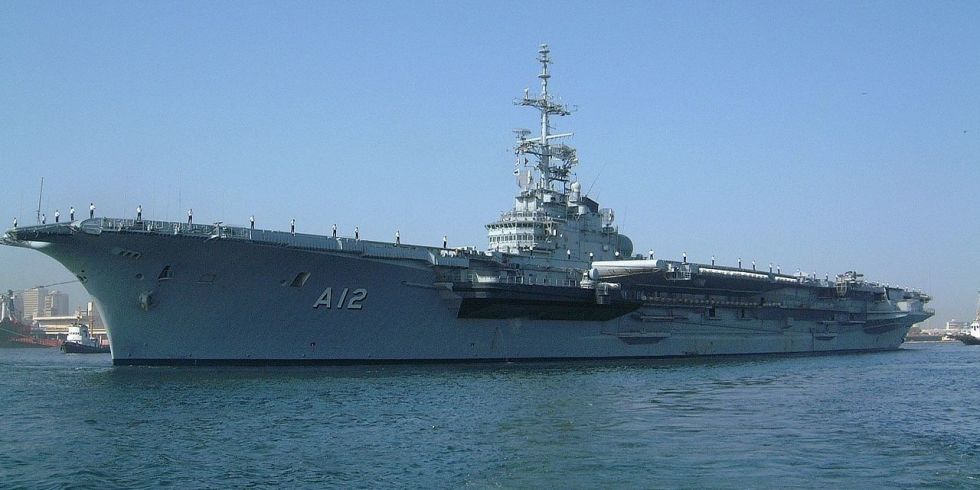"The ICJ as an effective conflict prevention tool in Latin America"
W. Alejandro Sanchez and Brittney J. Figueroa
E-International Relations
April 4, 2017
http://www.e-ir.info/2017/04/04/the-icj-as-an-effective-conflict-prevention-tool-in-latin-america/
The International Court of Justice (ICJ) has made a name for itself as various governments across the world resort to it to rule on inter-state disagreements. There are certainly valid criticisms about how the ICJ, the chief judicial body of the United Nations, operates, particularly as African governments have accused it of imposing Eurocentric international law. Some of its rulings on controversial cases have even been denounced as ‘step[s] backwards’.
Despite these criticisms, Latin American governments have regularly turned to ICJ rulings on border disputes and other inter-state disagreements. Over the past decades, the Court has ruled on numerous cases between Latin American states and enjoys a positive record so far in this region, given the generally peaceful compliance of Latin American states to the Court’s rulings. Nevertheless, the complexity of
one particular case, ‘Obligation to Negotiate Access to the Pacific Ocean’, a historically-charged territorial dispute between Bolivia and Chile, may prove to challenge the credibility of the ICJ in Latin America in the near future.
The ICJ in Latin America
Since commencing its operations in 1946, after the 1945 San Francisco Conference and the dissolution of the Permanent Court of International Justice, the
ICJ has had an important and constant role in Latin American geopolitical affairs. For example, the ICJ’s first case in the region was
Colombia v. Peru in 1949 regarding the interpretation of an asylum treaty.
Honduras and Nicaragua similarly turned to the Court in 1958 after the latter claimed that the Arbitral Award that delineates the borders between the two countries, made by the King of Spain in 1906, was not binding. Ultimately, Nicaragua
lost the case, as judges voted 14 to 1 in favor of Honduras.In other words, the ICJ has ruled not solely on cases relating to territorial disputes, but also diplomatic disagreements.
At the time of this writing, March 2017, out of the
Court’s 14 pending cases, seven involve Latin American states: three cases between Costa Rica and Nicaragua; two involving Nicaragua and Colombia; and two between Bolivia and Chile.
Discussion
How does the ICJ fit into Latin American geopolitics? The obvious answer is that it is a positive development that regional states are looking for non-violent means to solve their outstanding border disputes, including seeking third party mediation (and rulings).
Moreover, the governments that have gone to the Court have generally respected the ICJ’s decisions, though there have been occasions in which states return to the Court for additional clarification (and arguably to revisit the previous decision in order to obtain a more favorable ruling). The back-to-back rulings between Colombia and Nicaragua regarding their maritime dispute illustrates this situation. Additionally, there is the question of whether an ICJ ruling will be beneficial or detrimental to bilateral relations. For brevity, we are not able to provide an in-depth discussion about this issue, however it is worth noting that Peru and Chile have respected the Court’s decision over their maritime borders, and have strong bilateral ties, particularly when it comes to trade due to their membership in the Pacific Alliance, a regional trade bloc. With that said, the two countries have a history of “bad blood” and distrust dating back to the 19th century War of the Pacific, and while they will likely continue to respect the Court’s 2014 ruling, this does not necessarily mean that distrust will decrease in the short term. It is also worth noting that there is still a disagreement over the interpretation of the ICJ ruling regarding how it affects the territorial border between the two countries. For the moment, neither government appears interested in returning to the ICJ as the main goal is to improve bilateral relations rather than provoke more controversy, however this could happen at some point given the precedents set by other governments.
The numerous judicial procedures between San Jose and Managua require additional discussion as they exemplify how the ICJ is utilized. In 2010, Costa Rica went to the Court and asked that it investigate the legality of Nicaragua’s excavation of three channels of the River San Juan, as well as Nicaraguan military presence on Costa Rican territory. Very soon after, Managua submitted a counter claim to the court in 2011 stating that San Jose had failed to perform environmental impact assessments prior to the construction of a highway that runs close to the river. In December 2015,
the Court ruled that Nicaragua pay damages to its neighbor, as its actions violated Costa Rica’s territorial sovereignty, the 1858 Treaty of Limits, and the ICJ Order of 8 March 2011 (“
Certain Activities Carried out by Nicaragua in the Border Area”) outlining provisional measures issued by the court. On the other hand, Costa Rica was found guilty of the allegations in the counter claim, but was not ordered to compensate Nicaragua.
Although complex, this trial had a positive diplomatic end, as made clear by Nicaragua’s ambassador to the Netherlands, Carlos Argüello Gómez’s
statement that ‘[The] ruling will help ties between our two countries. When things are cleared up, then problems go away and that is the most important thing.’ This positive outlook, however, is fragile when the tensions between the parties involved are already high. Moreover on
16 January the ICJ announced that Costa Rica had commenced proceedings against Nicaragua, making it the third case between the two sides currently in the ICJ’s docket. Clearly, diplomatic relations between the two remain tense, however violence continues to be avoided.
A Pivotal Case
The intention of the authors is to propose that the Court’s ultimate challenge, including the question whether parties will respect its ruling, has to do with the Bolivia and Chile cases. There are currently not one, but
two cases under deliberation, the most controversial regarding a border issue that is over a century old and the foundation of patriotic sentiments in the landlocked nation as La Paz has sued Santiago in an effort to have access to the Pacific Ocean.
Bolivia lost its coastal territories to Chile during the War of the Pacific (1879-1883), making it a landlocked nation. The state has subsequently attempted to regain some sort of permanent corridor back to the Pacific. This is a very complicated and sensitive issue: should the Court award sovereignty to Bolivia to territory currently controlled by Chile, it would effectively cut Chile geographically in two. The case is still in its preliminary hearings and presentation of arguments and counter arguments; hence we will have to wait some years before the ICJ passes its decision.
Nevertheless, even at this early stage, tensions are already high. For decades, diplomatic relations between the two countries have been limited. In April 2013, the
Evo Morales government filed an application at the ICJ against Chile due to the failure, from the Bolivian point of view, of “Chile’s obligation to negotiate in good faith and effectively with Bolivia in order to reach an agreement granting Bolivia a fully sovereign access to the Pacific Ocean.” While Bolivia is utilizing the Court to force negotiations over access to the Ocean, Chile claims that the existence of a 1904 peace treaty has settled the account between the two nations, and hence does not see the need to negotiate further, thus
calling into question the jurisdictional boundaries of the Court. Santiago’s lack of intention to enter negotiations with La Paz over the past decades regarding the sea access is arguably the main reason why President Morales decided to go to an international judicial body for a favorable ruling to force Chile negotiate.
While the case is proceeding, in late March
Bolivia filed new paperwork at the ICJ, and Santiago has also opened a case against La Paz over the Silala River. The authors would argue that the Silala case is a countermove by Santiago over the sea access issue, a sort of legal tit-for-tat akin to the Costa Rica and Nicaragua proceedings. Due to space considerations, we cannot provide an in-depth discussion about the Silala case, which centers on Chile stating that the river is an international watercourse, therefore making Santiago “
entitled to the equitable and reasonable use of the waters of the Silala River system in accordance with customary international law.” While Santiago may have a valid claim to the river, the timing of the case suggests that more than interest in the river, Chile wants to “punish” Bolivia for commencing proceedings over the sea access issue.
It is important to note that the ICJ’s role in the sea access case is a bit different than its usual role. The Court is currently being used as a tool,
rather than as an explicit decider, in the case. This is exemplified in its
most recent declaration, aptly named ‘Obligation to Negotiate Access to the Pacific Ocean’. Rather than deciding on which of the two countries is granted access to the ocean, the ruling
makes it mandatory that Santiago peacefully
negotiates with La Paz regarding the coveted corridor to the Pacific. However, Chile’s president was
quick to remark that, even though the court has ruled so that Chile is forced to negotiate, “Bolivia hasn’t won anything” and that the ruling “does not affect the territorial integrity of Chile”. These comments regarding the heated, historically-charged case bring to light concerns about related future rulings. While it is uncommon for States to go against ICJ rulings, if they feel that the Court lacks jurisdiction over a particular matter,
they may contend. This possibility then raises important questions. If the two countries cannot come to an agreement on their own, will the Court issue an umbrella decision, and if it does,
will Chile comply?
The ICJ may attempt to go for a Solomon-like ruling, with La Paz gaining joint control, but not sovereignty, over a narrow corridor to the ocean. If both sides choose to respect the ICJ’s ruling on such a complex and controversial issue, this will provide the Court with further credibility of a near-perfect record in the region.
Final Thoughts
Since its inception, the International Court of Justice has been involved in Latin American affairs. While critics deem international courts
fundamentally ineffective, and wrestle with the idea whether compliance with international law may be a top priority for a state, the ICJ’s rulings in the region prove otherwise, as they have affected Latin American diplomatic relations over the past decades, and will continue to do so for the foreseeable future. Indeed, this analysis mentions how eight nations in recent years have gone to the ICJ to peacefully resolve various differences that range from territorial disputes to even navigational rights. In fact, half of the Court’s pending cases deal directly with Latin America, demonstrating how the region is eager for resolutions to inter-state conflicts that no longer require violence. This statement is supported by the fact that the last inter-state war was more than 20 years ago: the 1995 conflict between Peru and Ecuador, and prior to that, the 1982 Faklands/Malvinas War between Argentina and the United Kingdom.
Ultimately, while Latin American countries have generally respected the Court’s decisions, it will be important to monitor how countries involved in more controversial disputes, namely the Bolivia-Chile sea access case, will react to future ICJ rulings. Hopefully, the two parties will choose to continue in the peaceful steps of their fellow Latin American nations regarding the Court, and respect the ICJ’s ruling.
The authors wish it to be known that the views presented in this essay are their sole responsibility do not necessarily reflect those of any institutions with which the authors are associated.
W. Alejandro Sanchez Nieto and Brittney J. Figueroa.
Alejandro is an analyst who focuses on international security and geopolitics. Follow him on Twitter: @W_Alex_Sanchez. Brittney is a recent graduate from the University of California, Santa Barbara with a Bachelors degree in Global Studies, and a Minor in Latin American Iberian Studies.



